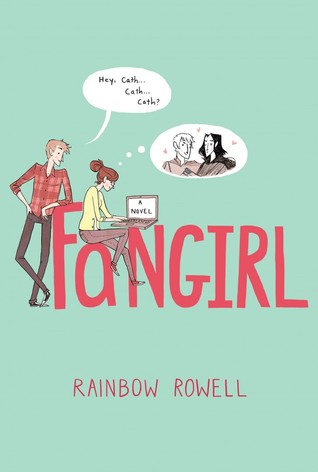In some of the stories, the parents were merely absent from the scene: rehab and extramarital affairs (Why We Took the Car) or business travel/personal projects (After Iris) or general unfitness as a parent (Close Your Pretty Eyes). In other books, the death of a parent was central to the plot, most notably in Counting by 7s and The Year of the Rat. Both of the historical novels (Ghost Hawk and Buffalo Riders) featured adolescent protagonists who were orphans.
Certainly some children and adolescents will have the bad fortune to lose a parent (or in rarer cases, both parents) as they are growing up, but it seems unlikely that all of these missing parents are representative of real-life statistics. So why the persistence of the theme? It certainly isn't a new phenomenon. In a Publisher's Weekly essay titled "The Ol' Dead Dad Syndrome", from Sept 20, 2010, author Leila Sales discusses the noticeable lack of parents in dystopian fiction.
Dead parents are so much a part of middle-grade and teen fiction at this point, it's not even the "in" thing. It's not "au courant" or "en vogue." It's just an accepted fact: kids in books are parentless.But interestingly, none of the titles I've referred to are dystopias. And it's not as if the teenagers are de facto orphans, either. Orphans have, of course, always been a staple of children's and YA fiction for the most obvious of reasons: if you get the parents out of the way, the young protagonist can really get on with the business of having adventures. After all, grown-ups can be boring and they have a tendency to say NO. Having fun, getting into danger, being independent, resolving one's own problems: think of it as the safest form of wish-fulfilment, think of it as convenient for both author and subject. Either way, orphans can exist in a fictional realm of possibility -- with actual grief and loss taking place (or more likely, not taking place) off the pages of the story.
Leila Sales also cites the "sympathy" factor as a reason for authors to orphan their main characters. She refers to one of the most famous orphans of children's literature: Mary Lennox in The Secret Garden. The plot of The Secret Garden could be described as the following: Orphan creates a garden, and in the process transforms herself and several dysfunctional others into a happy, healthy family. Interestingly, the plot of Counting by 7s could be described in exactly the same way. Mary Lennox is unsympathetic because she is unhappy and unfriendly, sickly and sour; Willow Chance, from Counting by 7s, is unsympathetic because she is a highly gifted child (and a bit of a know-it-all) who doesn't have a clue about how to fit into her peer group. At the very beginning of the book, Willow's sweet, loving parents must be dispatched so that she can finally emerge from a state of self-containment and isolation.
The emphasis in Counting by 7s is not so much on losing a family, but rather, on how new families are formed. In many ways, this is a really contemporary view on families. For instance, every single important character is either an immigrant or of mixed-race (or both). None of the characters particularly belong, either to their community or to any specific family. Willow describes herself as not fitting into "an easily identifiable ethnic category" (p. 11). This is a world in which people are connected, not by blood, but choice -- or need. There are lots of lonely, alienated people and they all function much better as an interdependent organism. When Willow and her new family transform the sterile, ugly environment of "Gardens of Glenwood" into a thriving, beautiful garden for real, it is also a metaphor for their emotional lives.
For all of the missing parents, there is something unique about The Year of the Rat -- a debut novel by Clare Furniss -- merely for the reason that the story is entirely about the real experience of losing a parent. This book is not about a teenager having adventures-without-parents, and it's also not about the 'romance' or emotional intensity of dying. Rather, it's about 16 year-old Pearl trying to cope with life after the death of her mother in childbirth. It's about making one's way out of a deep grief, and learning how to cope with a loss of something huge and irreplaceable. The book manages to capture the stages of grieving -- what that is actually like/how that feels -- more believably than any other YA book that comes to my mind. Although this heavy theme is somewhat lightened by secondary characters and the sympathetic, wise-cracking spirit of the dead mother, it is still an emotionally intense story. Interestingly, for all of the dead and missing parents, this is the only book in which the death of a parent actually drives the plot.
For more information about these books, please visit
TRAC Top Ten UKLA Longlist













